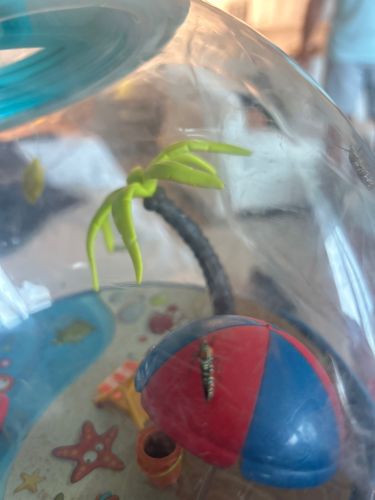Caddisfly Larva
Scientific Name: Trichoptera larva (general designation as specific species cannot be determined from the image)
Order & Family: Order: Trichoptera (Caddisflies), Family: Varies widely within the order, as there are many families of caddisflies, each with distinct larval forms and case-building habits. Without clearer features, precise family identification isn't possible.
Size: Larvae typically range from a few millimeters to about 30 mm (1.2 inches) in length, depending on the species and developmental stage.

Natural Habitat
Caddisfly larvae are exclusively aquatic, living in a variety of freshwater environments including streams, rivers, lakes, ponds, and wetlands. They are often found on the bottoms of these bodies of water, clinging to submerged rocks, plants, or debris.
Diet & Feeding
The diet of caddisfly larvae varies depending on the species. They can be detritivores (feeding on decaying organic matter), herbivores (grazing on algae and aquatic plants), predators (consuming smaller aquatic invertebrates), or filter feeders (straining particles from the water).
Behavior Patterns
Larvae of caddisflies are aquatic and famously build cases from silk and various materials found in their environment, such as sand, pebbles, twigs, or plant fragments. The case serves as protection from predators and currents. Adults are typically nocturnal, attracted to light, and are short-lived, primarily focused on reproduction. Larvae are an important food source for fish and other aquatic animals.
Risks & Benefits
Caddisfly larvae are indicator species for water quality; their presence and diversity can signify healthy aquatic ecosystems. They play a crucial role in nutrient cycling as decomposers and a food source for fish and other aquatic life, making them beneficial to the ecosystem. There are no known risks to humans.
Identified on: 8/29/2025